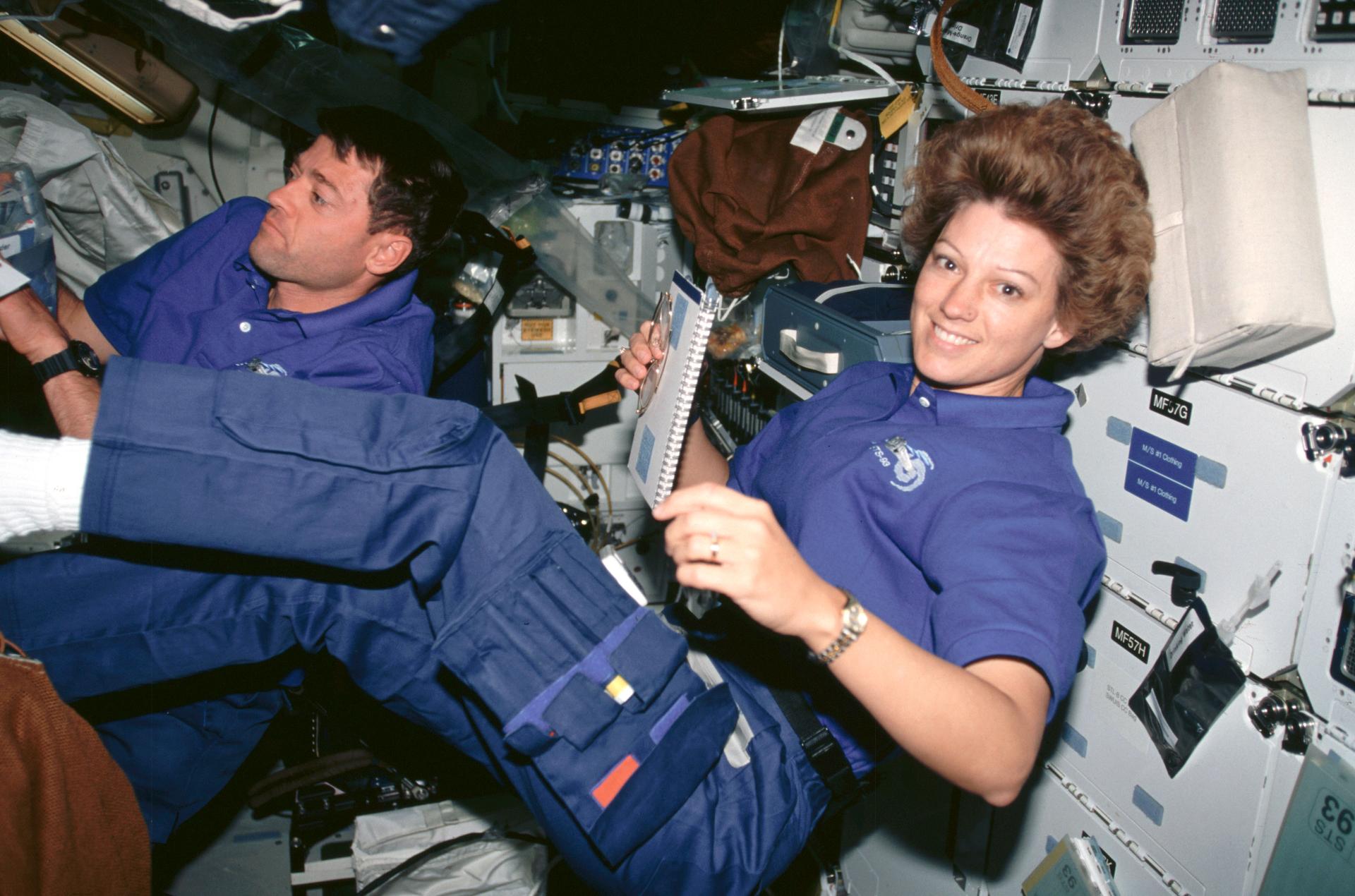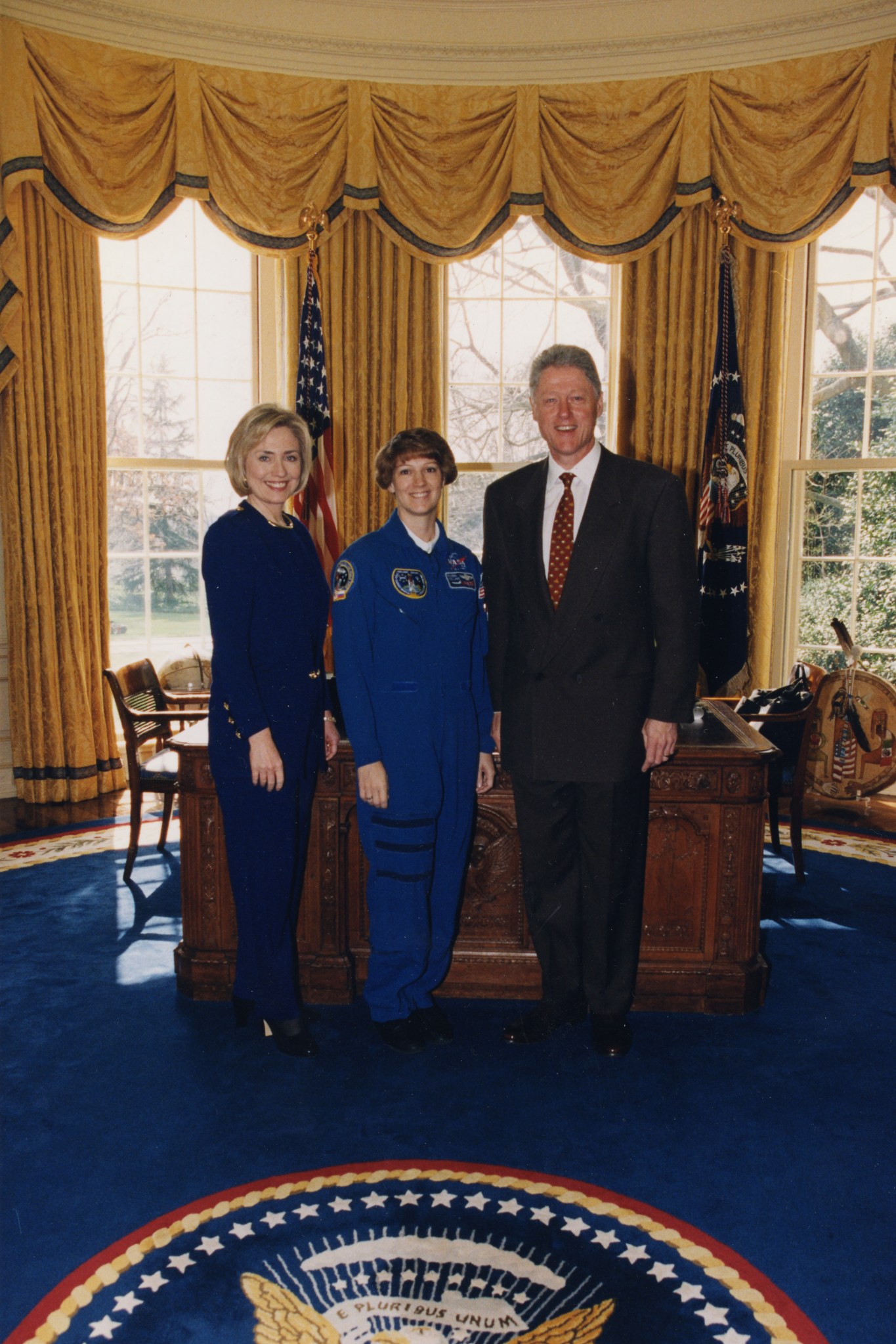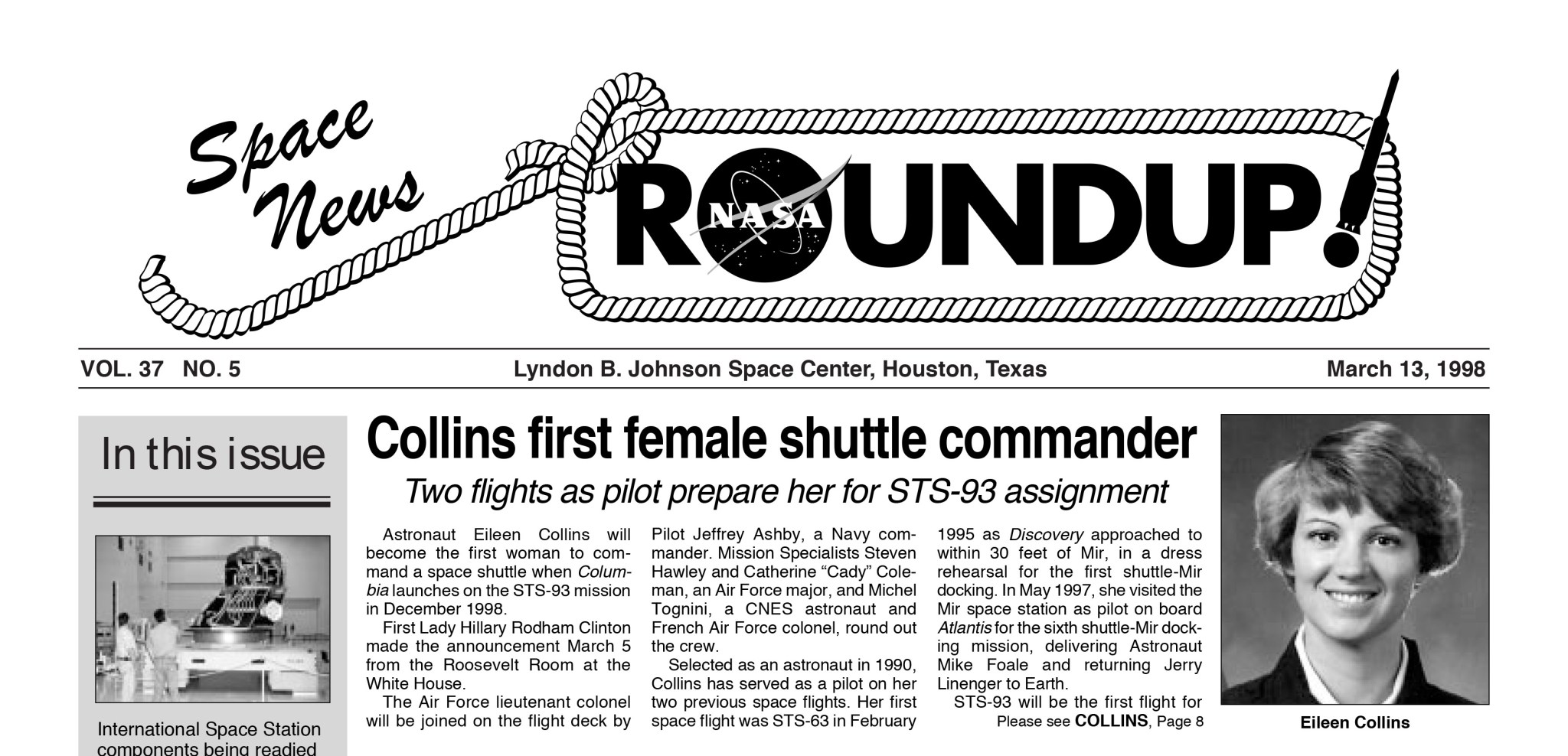Eileen Collins: First female space shuttle commander

Credits: NASA
In late February 1998, Johnson Space Center Deputy Director James D. Wetherbee called astronaut Eileen Collins into his office in Building 1. He told her he had been assigned to command STS-93 and went with her to speak with the director of Center, George WS. Abbey who informed him that he would be going to the White House next week.
Choosing a female commander to fly in space was a monumental decision, something the space agency recognized when it announced the president of the United States. First Lady Hillary Clinton wanted to publicly announce the escape to the American people along with her husband President William J. Clinton and NASA Administrator Daniel S. Goldin.

President William Jefferson Clinton and First Lady Hillary Rodham Clinton with Eileen Collins in the Oval Office.
Sharon Farmer and the White House Photography Office
At that event, on March 5, 1998, the First Lady noted what a difference it would make to have a woman in the commander’s seat. Referring to Neil A. Armstrong’s first words on the moon, Clinton proclaimed, “Collins will take one giant leap for women and one giant leap for mankind.” Collins, a military test pilot and shuttle astronaut, was about to break one of the last remaining barriers for women at NASA by being assigned a position previously filled only by men. Clinton continued to reflect on her experience with the space agency when she explained how in 1962, at the age of 14, she had written to NASA and asked about the qualifications to become an astronaut. NASA responded that women were not being considered to fly space missions. “Well, times sure have changed,” she said wryly.

The appointment of Eileen Collins as the shuttle’s first female commander was front-page news in the March 13, 1998 issue of the Johnson Space Center’s Space News Digest.
NASA
In the same year Hillary Clinton questioned the astronaut corps, a special subcommittee of the US House Committee on Science and Astronautics held hearings on the issue of sex discrimination in the selection of astronauts. Astronaut John H. Glenn, who flew that February in 1962, justified the exclusion of women from the corps. “I think it goes back to the way our social order is organized. It’s just a fact. Men go and fight wars and fly airplanes and come back and help design and build and test them. The fact that women are not in this field it is a fact of our social order, it may be undesirable.” Attitudes about women’s place in society, not just at NASA, were very hard to break. It would be 16 years before the agency selected its first astronaut class that included women.

Astronaut Eileen M. Collins looks at a checklist at the commander’s station on the forward flight deck of space shuttle Columbia on July 23, 1999, the first day of the mission. The highlight of the day was the deployment of the Chandra X-ray Observatory.
NASA
By 1998, views on women’s roles had changed substantially, as indicated by the name of the ship’s first female commander. The agency even commissioned a song for the occasion: “Beyond the Sky,” by singer-songwriter Judy Collins. NASA dedicated the launch of the historic mission to American female aviation pioneers from the Ninety-Nines – an international organization of women pilots – the Women Air Service Pilots (WASPs), women who flew planes for the military during World War II. Collins also extended an invitation to women who had participated in Randy Lovelace’s Women in Space program, where the women went through the same medical and psychological tests as the Mercury 7 astronauts; the press commonly referred to these women as the Mercury 13. (Commander Collins had thanked both the WASPs and the Mercury 13 for paving the way and inspiring her career in aviation and spaceflight in her White House speech.)
/Public Notice. This material from the original organization/author(s) may be current in nature and edited for clarity, style and length. Mirage.News does not take institutional positions or sides and all views, opinions and conclusions expressed herein are solely those of the author(s). Watch it in full here.
